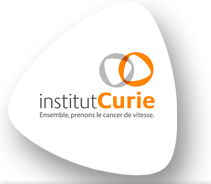Follicular lymphoma research: an open dialogue for a collaborative roadmap
Résumé
Follicular lymphoma (FL) is the second most common type of lymphoma (20% of all non‐Hodgkin lymphomas), derived from germinal centre (GC) B cells, and is characterised by its significant clinical, prognostic and biological heterogeneity, leading to complexity in management. Despite significant biological investigation and indisputable clinical progress since the advent of the immunotherapy era more than 20 years ago, much remains to be done to understand and cure this lymphoma. Today, FL is metaphorically a giant puzzle on the table with patches of sky, landscape and foliage clearly appearing. However, many of the remaining pieces are held by various stakeholders (e.g. clinicians, pathologists, researchers, drug developers) without global agreement on what the gaps are, or any clear blueprint on how to solve the puzzle of understanding the heterogeneity of this disease and create curative and tailored therapies. With the advent of new investigation and drug technologies, together with recent advances in our capacity to manage big data, the time seems ripe for a change of scale. More than ever, this will require collaboration between and within all stakeholders to overcome the current bottlenecks in the field. As for every investigator, we acknowledge that this first draft is necessarily biased, incomplete and some FL expert readers might recognise some remaining gaps not addressed. We hope they will reply to make this effort a collaborative one to assemble all the pieces in the most ideal fashion. As such, this review intends to be a first step and an interactive platform to a collaborative roadmap towards better understanding and care of FL.
Mots clés
World Health Organisation ZO
zanubrutinib in combinationwith obinutuzumab
antigen
AI
artificial intelligence
BCL
B cell lymphoma
BCR
B cell receptor
BM
bone marrow
CAR-T
chimeric antigen receptor T
COO
cell of origin
cFL
constrained FL
CMG
chromatin modifying genes
CPC
cancer progenitor cells
CRR
complete response rate
ctDNA
circulating cell-free tumour DNA
DZ
dark zone
dFL
DLBCL-like FL
DLBCL
diffuselarge B cell lymphoma
FFPE
Formalin-fixedparaffin-embedded
FL
follicularlymphoma
FLIPI
FL international prognosticindex
GC
germinalcenters
GOF
gain-offunction
ICT
immunochemotherapy
Ig
immunoglobulin
LOF
loss of function
LZ
light zone
MRD
minimal residual disease
NHL
non-Hodgkin lymphoma
ORR
overall response rate
OS
overall survival
PFS
progression-free survival
POD24
progression of disease within 24months of treatment
PRC2
polycomb repressive complex 2
RISC
relapse-initiating subclones
RT-PCR
reversetranscription-polymerase chain reaction
RR
relapse/refractory
SHM
somatic hypermutation
SLO
secondary lymphoid organs
SOC
standard of care
TFH
T follicular helper cell
tFL
transformed FL
TME
tumour microenvironment
TNF
tumour necrosis factor
WHO
World Health Organisation
ZO
Ag
antigen AI
artificial intelligence BCL
B cell lymphoma BCR
B cell receptor BM
bone marrow CAR-T
chimeric antigen receptor T COO
cell of origin cFL
constrained FL CMG
chromatin modifying genes CPC
cancer progenitor cells CRR
complete response rate ctDNA
circulating cell-free tumour DNA DZ
dark zone dFL
DLBCL-like FL DLBCL
diffuselarge B cell lymphoma FFPE
Formalin-fixedparaffin-embedded FL
follicularlymphoma FLIPI
FL international prognosticindex GC
germinalcenters GOF
gain-offunction ICT
immunochemotherapy Ig
immunoglobulin LOF
loss of function LZ
light zone MRD
minimal residual disease NHL
non-Hodgkin lymphoma ORR
overall response rate OS
overall survival PFS
progression-free survival POD24
progression of disease within 24months of treatment PRC2
polycomb repressive complex 2 RISC
relapse-initiating subclones RT-PCR
reversetranscription-polymerase chain reaction RR
relapse/refractory SHM
somatic hypermutation SLO
secondary lymphoid organs SOC
standard of care TFH
T follicular helper cell tFL
transformed FL TME
tumour microenvironment TNF
tumour necrosis factor WHO
Domaines
Sciences du Vivant [q-bio]| Origine | Publication financée par une institution |
|---|---|
| licence |




